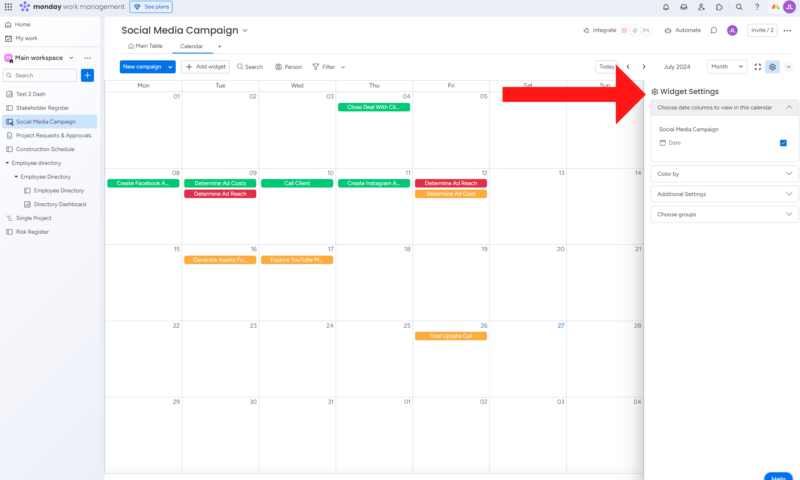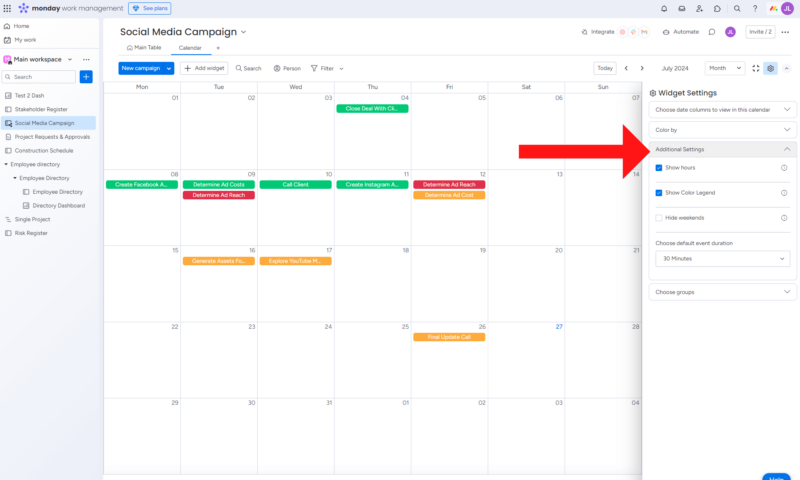How to Use the monday.com Calendar: A Tutorial in 2025
Kanban boards, Gantt charts and tables are great tools in project management software, but sometimes, the humble calendar can trump them all. In this guide, we’ll show you how to use the monday.com calendar to enhance your project.
Whether you use calendars to track meetings, monitor due dates or anything else, there’s no denying that this simple tool can be a lifesaver during projects. Thankfully, monday.com — which tops our roundup of the best project management software — offers some of the most intuitive calendars around. In this guide, we’ll show you how to use the monday.com calendar.
Below, we’ll teach you how to add a calendar to your workspace, customize it, add it to project dashboards, and create two-way data syncs with Google Calendar and Outlook Calendar. We know you’re eager to learn, so let’s get started.
Does monday.com Have a Calendar?
Yes, monday.com has a calendar that can be used from the Standard plan and up. Not only does monday.com have an integrated calendar that lets you see important goal dates, but it also offers Google and Microsoft Outlook calendar integrations. You can learn more about the rest of its project management features in our monday.com review.
Why Should You Use the monday.com Calendar?
If possible, project managers should use the monday.com calendar in their end-to-end project management plan to ensure that team members know what’s happening on any given day. Calendars can display goal deadlines, task due dates, events and more.
Avoid Costly Project Management Mistakes – Get Free Tips Today!

- Discover 10 fundamentals of project management
- Understand step-by-step plans for PM execution
- Learn tips to avoid 5 common mistakes by beginners
How to Use a monday.com Calendar
Creating a calendar on monday.com is a straightforward process that doesn’t take more than a few minutes. In the next section, we’ll share the steps to add a monday.com calendar to your workspace.
Add a monday.com Calendar View to a Board
Adding a calendar to your board is easy. Below, we’ll walk you through the process.
- Choose Where to Add a Calendar
The first step is to pick the workspace or board to which you want to add a calendar. Once you decide which board needs a calendar view, click the “plus” button at the top of the board.
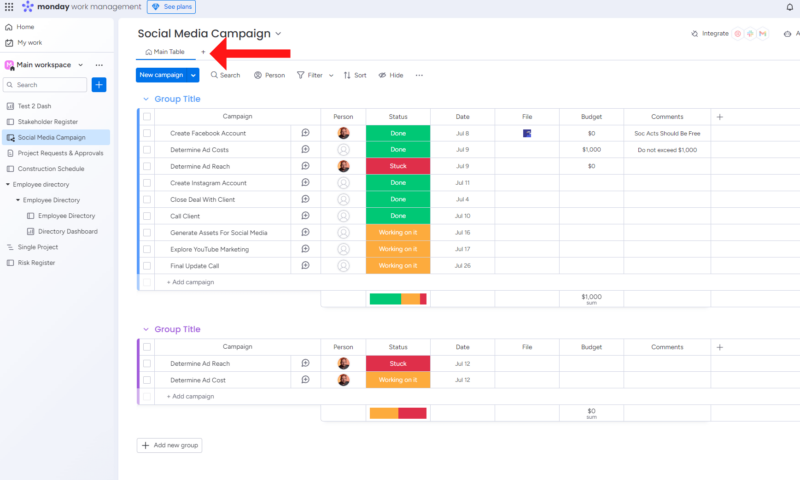
- Create the Calendar
Next, click the “calendar” option from the pop-out menu.
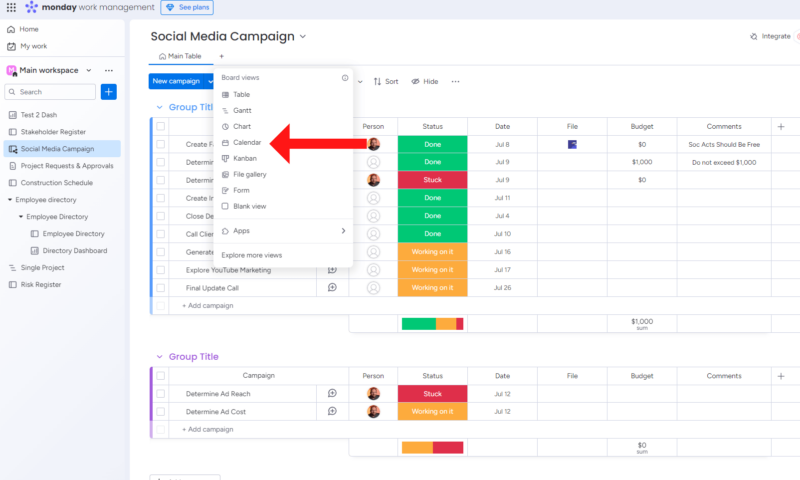
- View the Calendar
This workspace will now include a calendar. All of the tasks and data associated with the project in this workspace will automatically appear on your new calendar.
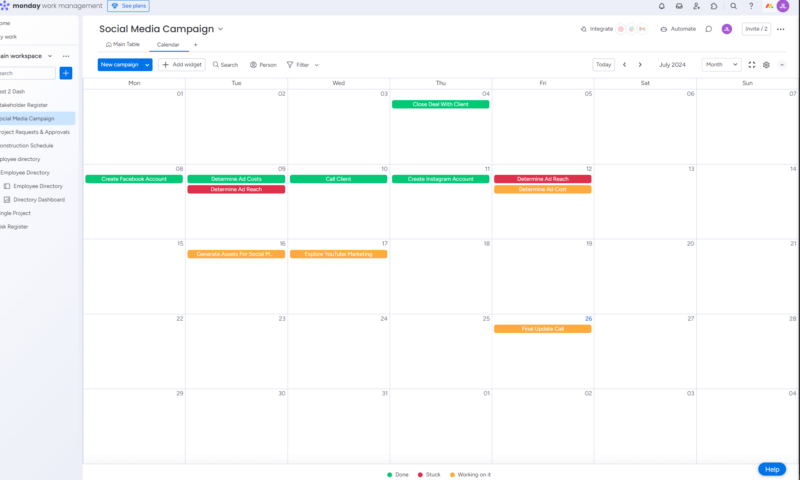
Adjust and Customize Calendar Settings
The calendars on monday.com can be adjusted and customized to your liking. You can color-code items, add time and date customizations, perform searches and filter data. For this example, we’ll teach you how to hide weekends from your calendar. Follow the steps below to learn how to perform this action.
- Enter the Calendar Settings
To adjust your calendar, you must first enter the calendar settings. From the calendar screen, click the cog icon at the top right.
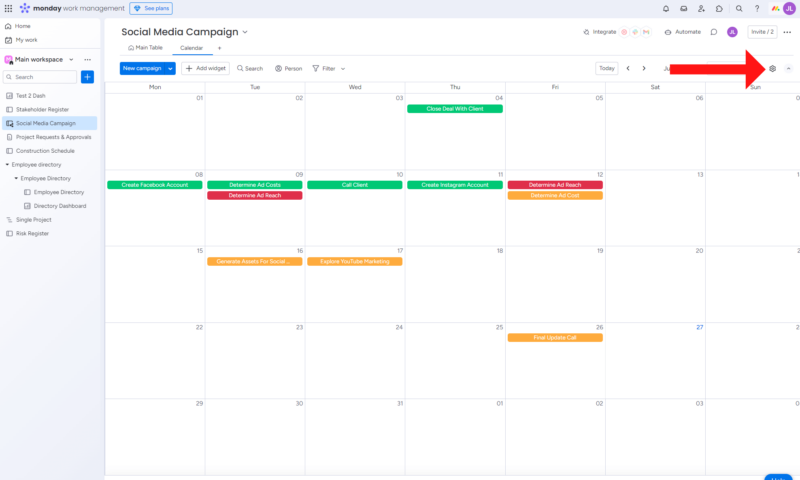
- Hide Weekends From the Calendar
To hide weekends from your calendar, simply click the “hide weekends” checkbox in the menu. To show weekends again, click the “hide weekends” checkbox once more to deselect it.
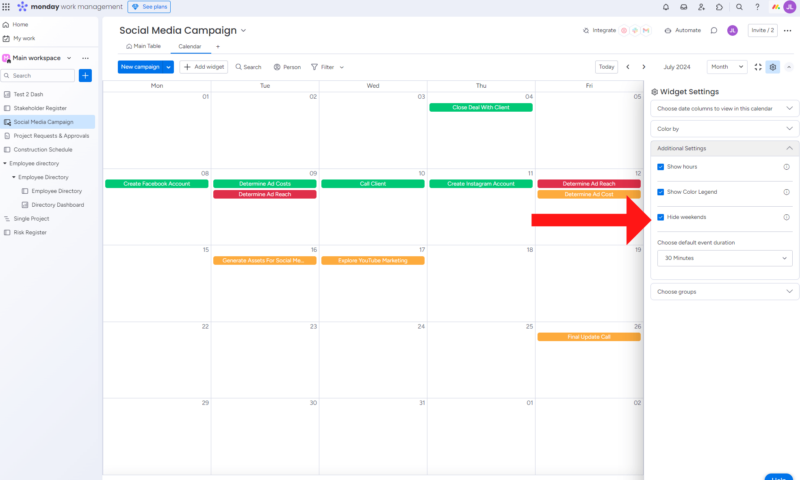
- Make Additional Changes as Needed
To make other adjustments to your calendar, select the dropdown menu related to the option you want to change. Then check or uncheck additional settings as needed.
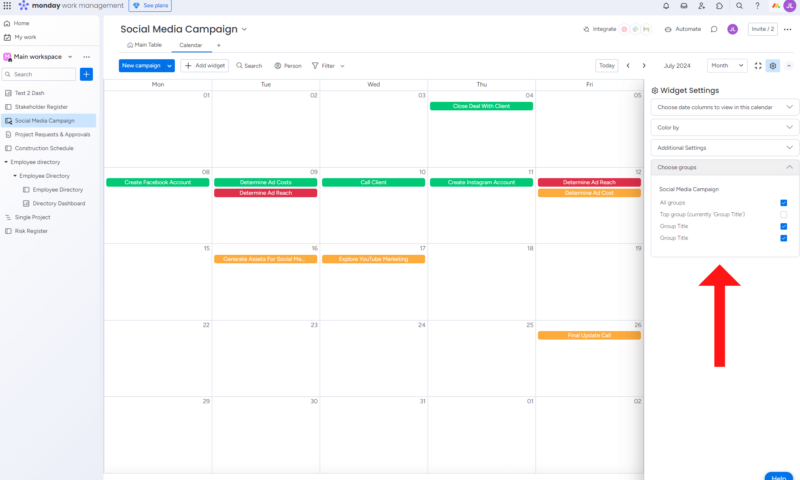
Add Calendar Widget
In addition to having calendars in workspaces, you can add calendar widgets to dashboards. Follow the instructions below to add a monday.com calendar to a project dashboard.
- Add a Dashboard Widget
On your dashboard screen, click the “add widget” button, which is located at the top-left corner. When you do this, the widget app will open.
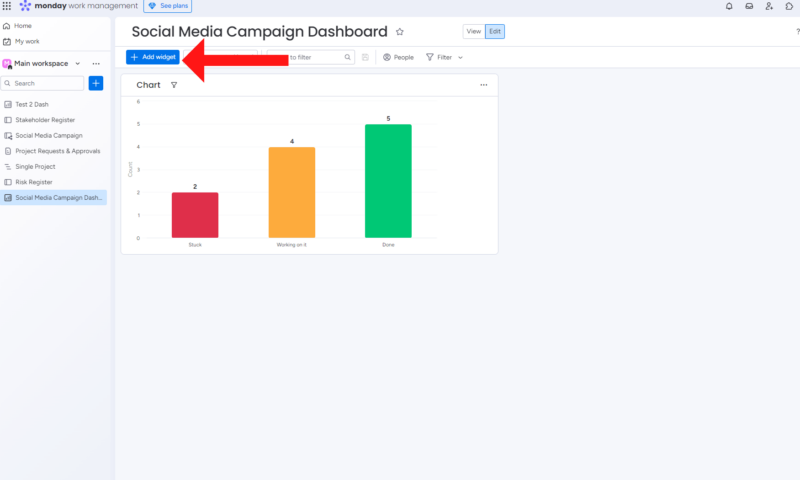
- Add the Calendar Widget
In the “widget center” app, scroll to find the calendar widget and click the “add widget” button. Once you’ve added the widget, your calendar will be visible on your project dashboard.
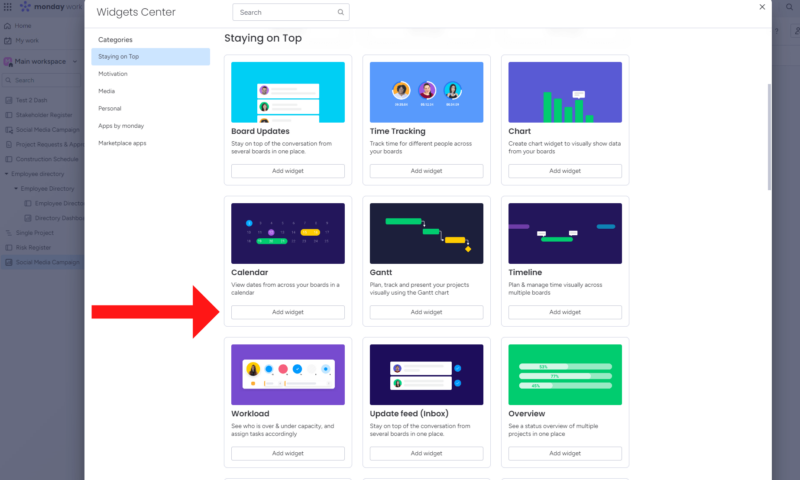
Customize Dashboard Calendar Widget
Like the workspace calendar, you can adjust calendar widget settings. Follow these steps to change the dashboard calendar widget settings.
- Enter the Calendar Widget Settings
To change the calendar widget settings, click the three dots in the top-right corner of the calendar widget.
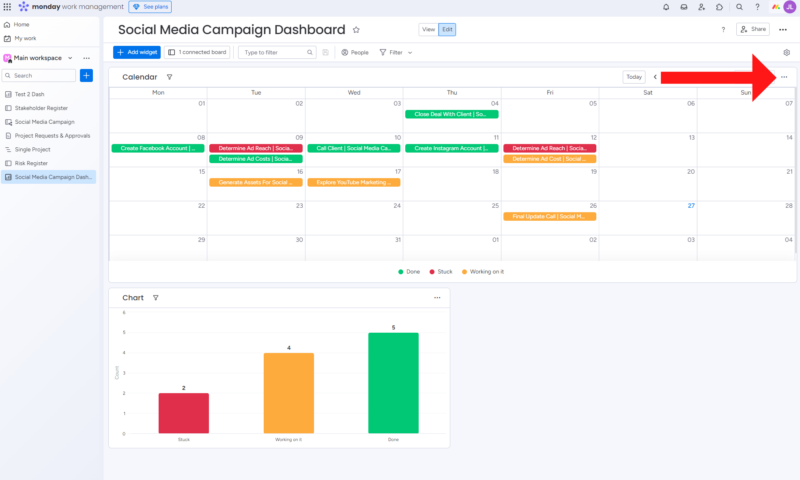
- Change Settings as Needed
You can now change the settings of your calendar widget. Simply use the dropdown menus to check or uncheck the settings you wish to change.
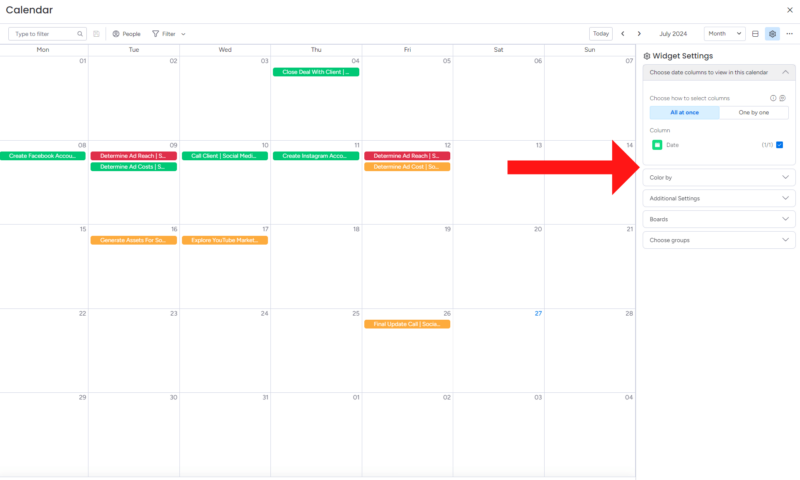
How to Change monday.com Calendar to Start on Sunday
Individual users can change the monday.com calendar’s start day to Sunday. Go to “my profile,” select the “language & region” option and then choose “Sunday” as the first day of the week.
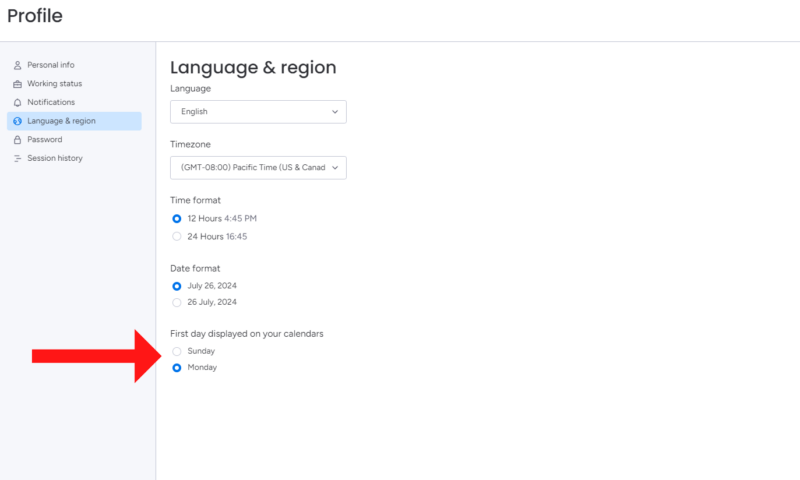
Administrators can also change the first day of the week for all the calendars in a workspace. To do this, click your profile avatar in the upper-right corner, scroll to the “general” section and select the “account” tab. Then, choose “Friday-Saturday” or “Saturday-Sunday” as your preferred weekend days.
Other Calendars on monday.com
In addition to regular calendars that you can create yourself in any workspace, monday.com offers a few other calendars in the form of templates and integrations. Below, we’ll explain the different types of calendar integrations, show you how to enable them and highlight the standard calendars on offer.
monday.com Calendar Templates
If you don’t like the idea of creating a calendar from a blank canvas, fear not. monday.com offers a few different calendar templates. For example, there’s a general work calendar template that integrates with Zoom and Google Calendar. You can use this calendar to assign due dates for the current week, the next week, and even the next month and beyond.
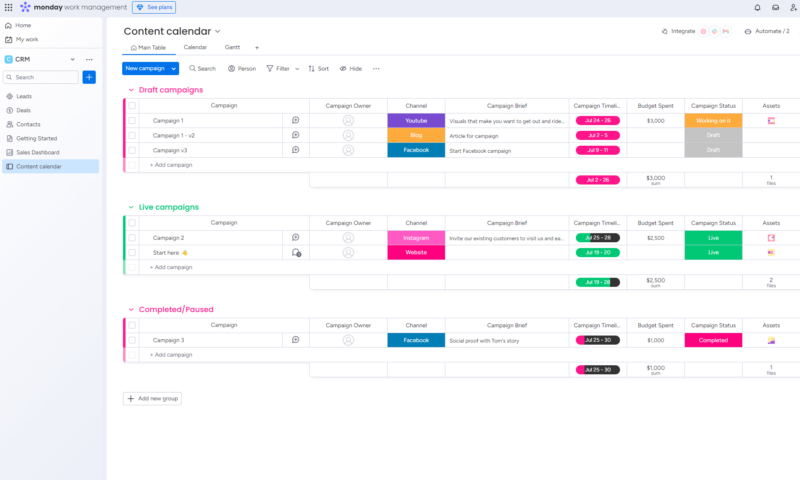
a standard calendar, a Gantt chart or a kanban board.
There’s also a content calendar template that simplifies the process of managing content-related tasks like publishing, content planning and collaboration. This calendar also lets you easily convert calendar data into a Gantt chart, a kanban board and a workload board. Below, we’ll walk you through the steps to quickly add a content calendar to your workspace.
How to Create a Content Calendar in monday.com
Creating a content calendar is quick and easy; here’s how to do it:
- From the main monday.com screen, click the “plus” sign in the left-hand menu.
- From the pop-out menu, select the “template center” option.
- In the search field, type “content calendar.”
- Next, select the content calendar.
- From the content calendar template screen, click the “use template” button.
How to Integrate monday.com With Google Calendar
If you’re a fan of Google Calendar, it’s possible to transfer that data to monday.com. Follow the steps below to integrate a sync between monday.com and Google Calendar.
- Ensure that your monday.com board has a date column.
- Click the “integration” button at the top of the monday.com screen.
- Search for and select the “Google Calendar” option.
- Select this recipe: “when an event is created in Google Calendar, create an item and sync future changes from Google Calendar.”
- Follow the steps to connect your Google and monday.com accounts.
- Configure the integration.
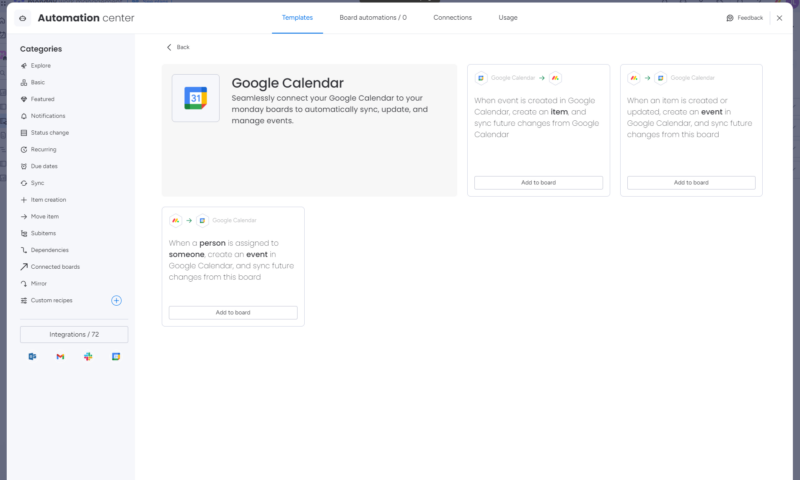
You can also create a sync that adds events from your monday.com calendar to your Google Calendar. To do this, repeat the above steps — but at step four, select the “when an item is created or updated, create an event in Google Calendar and sync future changes from this board” option.
How to Sync monday.com With Outlook Calendar
You can also link your monday.com account with the Outlook Calendar. It’s worth noting that you’ll need a Microsoft 365 Business Premium plan for this to work. To add monday.com calendar events to your Outlook Calendar, follow the steps below.
- Make sure your monday.com board has a date column.
- Click the “integration” button on your monday.com workspace.
- Locate the “Outlook Calendar” integration and select it.
- Choose the “when an item is created or updated, create an event in Outlook Calendar” recipe.
- Follow the onscreen instructions to connect your monday.com and Outlook accounts.
- Configure the integration.
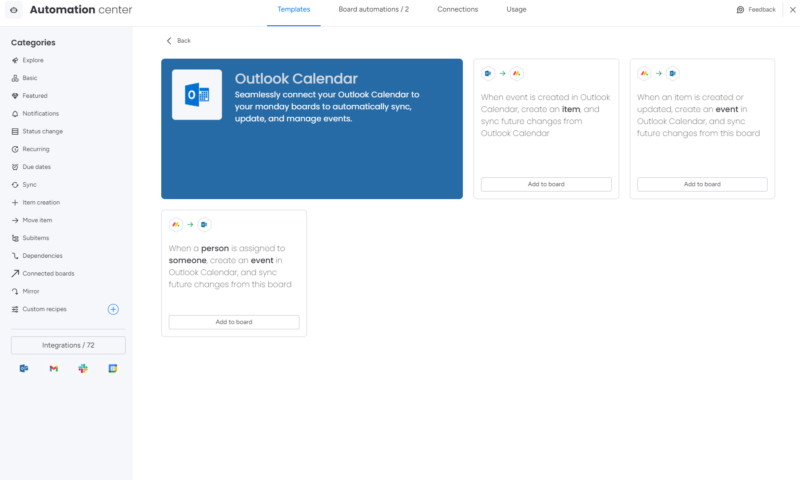
You can also create a sync that adds Outlook Calendar entries to your monday.com calendar. Repeat the steps above, and at step four, choose the “when an event is created in Outlook Calendar, create an item and sync future changes from Outlook Calendar” option.
We also have a step-by-step guide if you want to integrate monday.com with Microsoft Outlook.
Final Thoughts
Calendars are simple tools compared to Gantt charts and kanban boards. However, we can’t deny that the tried-and-true method of scheduling and tracking dates on a calendar still has a place in our modern world. Fortunately, monday.com makes it pretty easy to create calendars and sync them with popular options like Google Calendar and Outlook Calendar.
If you’ve decided to discontinue your use of monday.com, we have a guide on how to delete monday.com account for a straightforward process.
Do you use calendars when plotting a timeline, or do you prefer using Gantt charts and boards? Do you integrate your monday.com workspace with Google or Microsoft calendars? What do you like about using calendars? Let us know in the comments. If you’d like to learn more about how to use monday.com, check out our monday.com for beginners guide. Thanks for reading.
FAQ: monday.com Calendar Tutorial
Yes, monday.com has a calendar option. It can be used separately, or it can be integrated with third-party calendars.
Yes, you can create a content calendar on monday.com. You can build one from scratch or use the provided template.
Yes, you can share calendars with team members, stakeholders and clients on monday.com.



